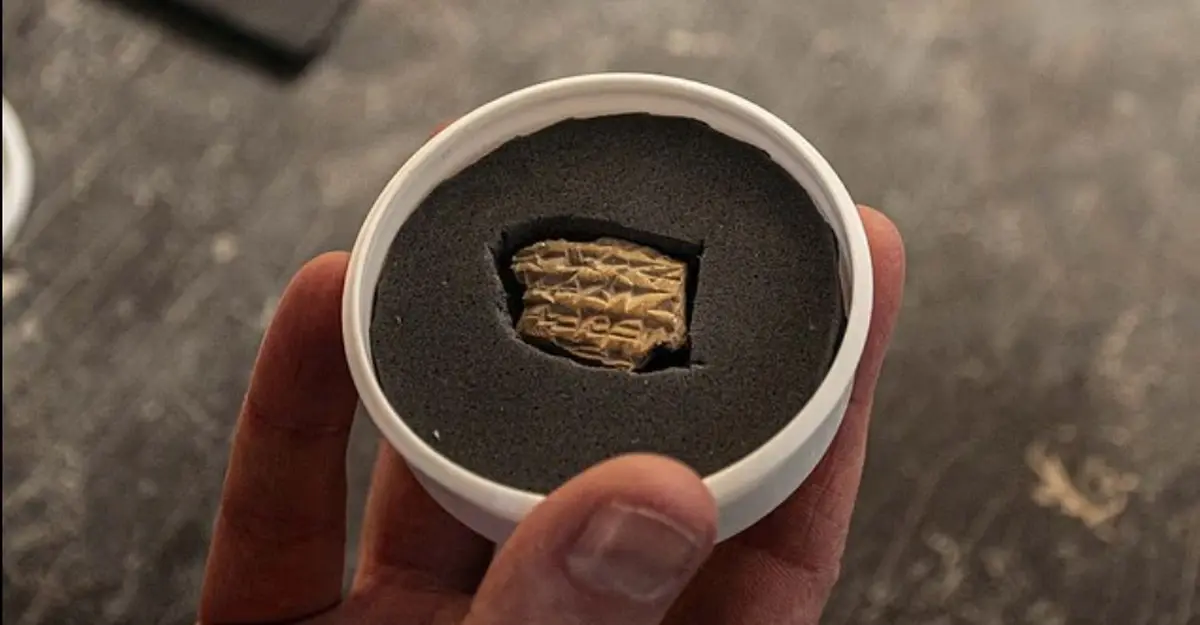 According to a team of from Bar-Ilan University, an Assyrian inscription has been discovered in Jerusalem for the first time. Researchers believe that this tiny fragment of an ancient seal is linked to a story from the Old Testament.
According to a team of from Bar-Ilan University, an Assyrian inscription has been discovered in Jerusalem for the first time. Researchers believe that this tiny fragment of an ancient seal is linked to a story from the Old Testament.
The find is a 2.5-centimeter clay fragment inscribed with Akkadian cuneiform—the oldest written Semitic language in the world. “This is part of a royal seal with an inscription—a clay bullae used to authenticate letters and official documents. What we see here is direct evidence of official correspondence between Assyria and Judah,” said lead researcher Peter Silberberg. He noted that this is the first discovery of its kind.
According to the scholars who deciphered the , it likely pertains to a complaint from the Assyrian Empire regarding a delay in payment from the Kingdom of Judah.

The text specifies a date for the postponed tribute payment—the first day of the 11th month in the Hebrew calendar. This indicates official communication between the Assyrian Empire and the kings of Judah. Researchers believe this event may coincide with the reign of King Hezekiah, although it could also relate to the periods of Manasseh or Josiah.
The team recalled the biblical story from the Old Testament about how Hezekiah had to pay the Assyrian king Sennacherib (who ruled from 705 to 681 B.C.) 300 talents of silver and 30 talents of gold. This tribute was meant to protect Judah from Assyrian aggression.
Peter Silberberg remarked that it’s challenging to reconcile the small size of the fragment with its scientific significance. “This fragment is tiny, but it tells a very important story,” the scholar stated.
Experts from the Israel Antiquities Authority (IAA), which oversaw the excavations, shared the results of a petrographic analysis of the clay seal. This analysis revealed that it was not produced in Jerusalem. The mineral composition of the clay corresponds to deposits in the Tigris basin, where major Assyrian cities like Nineveh, Ashur, and Nimrud were located. Therefore, the artifact may have been part of official Assyrian documents or correspondence sent to Judah.
According to the researchers, this discovery highlights the complexities of ancient diplomacy and indicates that even small kingdoms like Judah engaged in detailed negotiations with one of the superpowers of that era. Such correspondence was vital for navigating the political pressures of a mighty empire like Assyria, as reported by Daily Mail.
This discovery has provided researchers and historians with a rare opportunity to glimpse into the diplomacy, economy, and politics of the ancient Near East. The find illustrates the historical context of biblical narratives regarding Judah’s tribute to Assyria, proving that these stories reflected real interactions between kingdoms.
The fragment of the clay document serves as a reminder that significant history can be hidden even in a miniature artifact, linking biblical texts to archaeological reality and enriching our understanding of life in ancient Jerusalem.
